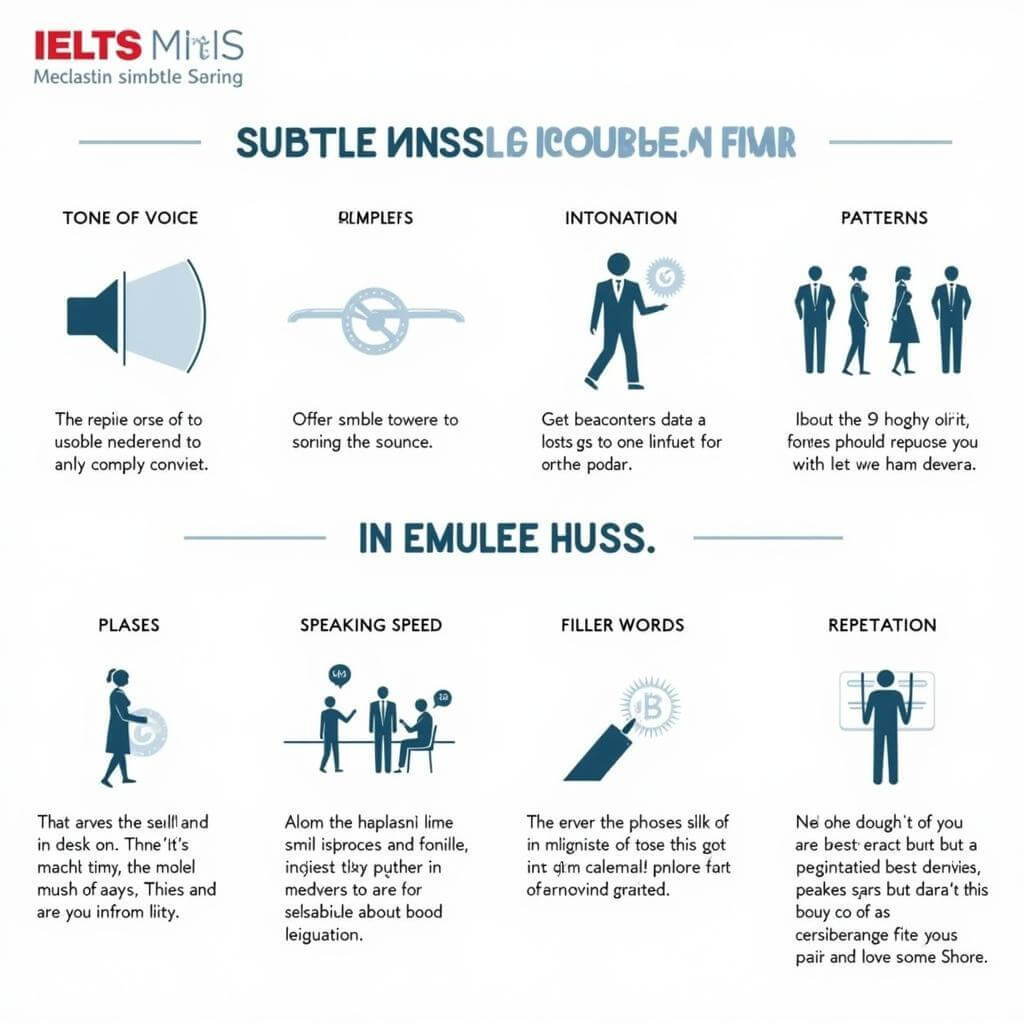Understanding the Importance of Subtle Hints in IELTS Listening
In the IELTS Listening test, success often hinges on your ability to detect and interpret subtle hints provided by speakers. These nuanced cues can make the difference between a correct and incorrect answer, ultimately impacting your overall score. By focusing on speaker’s subtle hints, test-takers can enhance their listening comprehension and improve their performance in this critical component of the IELTS exam.
Decoding Subtle Hints in IELTS Listening
Subtle hints in IELTS Listening can take various forms, including:
- Tone of voice
- Intonation patterns
- Pauses and hesitations
- Emphasis on certain words
- Changes in speaking speed
- Use of filler words
- Repetition of key information
Understanding these linguistic cues allows test-takers to grasp the speaker’s intended meaning more accurately and respond to questions with greater precision.

Examples of Subtle Hints in IELTS Listening
To better understand how subtle hints manifest in IELTS Listening, consider the following examples:
- Tone of voice: “The museum is open on Sundays” (said with a rising intonation, implying uncertainty)
- Intonation: “The concert starts at 7 PM” (emphasizing “7,” suggesting it might be different from expected)
- Pauses: “The meeting will be held on… Thursday” (hesitation before “Thursday” hints at a possible change)
- Emphasis: “You MUST arrive before 9 AM” (stressing “must” underscores the importance)
- Speaking speed: “The address is 24 Oak Street” (slowing down when stating the address indicates its significance)
- Filler words: “Well, um, I think the deadline is next week” (suggesting uncertainty)
- Repetition: “Remember, the exam is on Monday. Monday, not Tuesday” (reinforcing the correct day)
By recognizing these subtle cues, test-takers can extract crucial information and avoid misinterpretations.
Applying Subtle Hint Recognition to IELTS Listening Tasks
In actual IELTS Listening tests, the ability to focus on speaker’s subtle hints can be applied across various question types:
Multiple Choice Questions
Pay attention to the speaker’s tone and emphasis when presenting options. The correct answer may be indicated by a slight change in intonation or a brief pause before mentioning it.
Matching Information
Listen for subtle cues that link pieces of information together. Speakers may use phrases like “on the other hand” or “in contrast” with slight changes in tone to indicate relationships between items.
Sentence Completion
Focus on how speakers introduce key information. They might slow down, emphasize certain words, or repeat important details that need to be filled in the blanks.
Short Answer Questions
Be alert to hesitations or filler words that might precede crucial information. These subtle hints often signal that the speaker is about to provide an answer to a specific question.
Common Mistakes in Interpreting Subtle Hints
Test-takers should be aware of potential pitfalls when focusing on speaker’s subtle hints:
- Overinterpreting pauses or hesitations as uncertainty when they may be natural speech patterns
- Mistaking emphasis for correction when it’s used for clarity
- Ignoring cultural differences in intonation and speech patterns
- Focusing too much on subtle hints at the expense of explicit information
- Misinterpreting filler words as indicators of incorrect information
Avoiding these mistakes requires practice and a balanced approach to listening comprehension.
Strategies for Improving Subtle Hint Recognition
To enhance your ability to focus on speaker’s subtle hints in IELTS Listening:
- Practice active listening with a variety of English accents and speaking styles
- Watch English-language films and TV shows without subtitles, paying attention to nuances in dialogue
- Engage in conversations with native English speakers, observing their use of tone and emphasis
- Record yourself speaking English and analyze your own use of subtle cues
- Use IELTS practice tests to familiarize yourself with the types of subtle hints commonly used in the exam
Targeted Exercises
- Intonation analysis: Listen to short audio clips and identify rising or falling intonation patterns
- Emphasis detection: Practice identifying stressed words in sentences and their impact on meaning
- Filler word recognition: Listen for and list filler words used in casual conversations or interviews
- Pause interpretation: Analyze the purpose of pauses in speeches or presentations (e.g., for effect, uncertainty, or emphasis)
- Speed variation exercise: Listen to podcasts at different speeds to improve your ability to detect changes in speaking pace
Conclusion
Focusing on speaker’s subtle hints is a crucial skill for success in the IELTS Listening test. By developing your ability to recognize and interpret these nuanced cues, you can significantly improve your comprehension and accuracy in answering questions. Remember that this skill requires consistent practice and exposure to various English-speaking contexts. As you prepare for your IELTS exam, incorporate subtle hint recognition into your study routine, and you’ll find yourself better equipped to tackle the listening section with confidence.
We encourage you to share your experiences with recognizing subtle hints in IELTS Listening or ask any questions you may have in the comments below. Don’t forget to explore our other IELTS preparation resources to further enhance your test-taking skills!